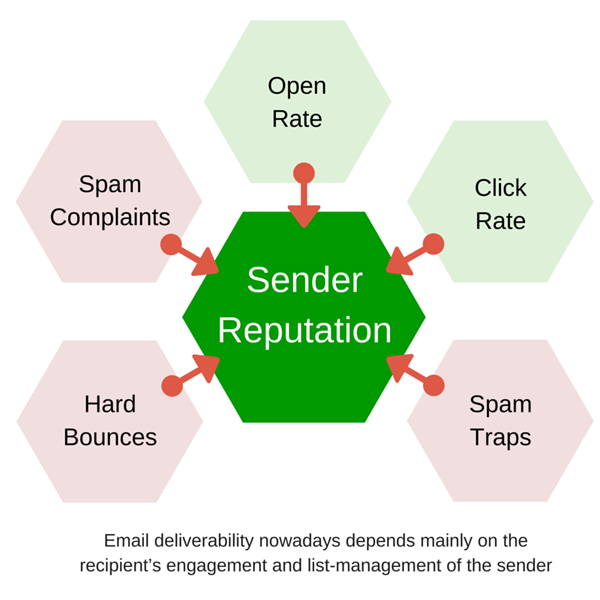Most businesses are not aware that their companies domain has a “status” on the Internet; let alone what it is or how to check it. In fact, it is called a “reputation”, and this is the “grade” that is given to either your domain name and/or the IP Addresses/systems that you use to send email.
When you send email out (especially to Hotmail, AOL and Yahoo, Gmail, etc), the receiving email servers monitor both the content of your emails as well as the amount of messages you send. They “grade” you according to complaints registered by their own customers/your email recipients (usually about the email being spam), as well as the number of hard bounces created by your sends. The more traffic that you generate (emails you send), the higher the probability that negative feedback will affect your email reputation and could even get you blacklisted.
When an email campaign is sent out via mass mailing lists, it immediately creates a large amount of traffic to various receiving providers. If the lists are not properly maintained (i.e., if old or invalid email addresses aren’t removed or updated), there is a higher risk of getting a bad score with the receiving provider.
The providers’ actions might include alerting you of a problem by email, which is generally included in the bounce message returned to the sender. Some providers will report your server to various RBLs (Real Time Blacklists), or just simply block traffic from your server for a certain amount of time while they continue to monitor you. The worst part, is that you won’t know anything is wrong, you’ll keep on sending emails, but your emails wont ever arrive at their designation. Have you ever had a customer tell you they never received your email? Your servers could be blocked by some providers, or maybe your email just got caught up in a SPAM filter.
When your business relies on sending email, you have to maintain control of this situation.
Here are some steps to follow:
- Always remove Hard Bounces from your lists. Follow-up with the email owner to verify why the email bounced. It might have bounced because that companies mail server was down during the time you tried sending, or maybe the person you tried to email no longer works there, or maybe they got remarried and their email address has since changed, what ever the reason it’s worth following up on. You’ve worked hard to build your email marketing lists, it’s easier to follow-up on an existing email address than to aquire new ones.
- Keep track of who doesn’t open or interact with your emails and if those same people don’t open or click on any links over a period of time ie 1 month, then its best to remove them from your future sends, as email service providers are able to detect this themselves and this can negatively affect your reputation as well. If you’re sending lots of emails, but no one on the other end is reading or interacting with your emails, you’re just clogging up the internet with junk.
- Immediately remove unsubscribes, because if you don’t, they could eventually mark your email as SPAM, which can hurt your reputation online as a marketer.
- If you purchase email lists (not recommended), get them cleaned up before you send to them. Submit the list to a list verification service to remove any bad email addresses.
- Consider using an online Email Service Provider, such as Constant Contact, Mail Chimp or even IntelliClick for GoldMine to manage your unsubscribes/bounces, and send your campaigns.
- Monitor your mail server logs (if you own your own mail server) to make sure that you haven’t been hacked and someone else isn’t sending from your mail server.
- Try to communicate directly with the receiving providers and sign up for their feedback loops as a sign of cooperation.
- At regular intervals, check out sites like EmailSecurityGrader, MXToolbox.com and even Senderscore.com for a more generalized picture of your companies reputation. These sites will show you whether your server is blacklisted and if your mail and/or DNS servers are properly configured. They will also give you pointers on securing and adjusting your mail server/DNS settings.
Ultimately, your reputation is based on what leaves and enters your server, so it’s up to you to maintain control: set your rules, abide by your rules, and make sure your employees abide by your rules so that you won’t have to worry about your reputation. It’s so easy to maintain a good reputation than to try to get it back once you’ve been blacklisted, so it’s better to be proactive instead of reactive.


